1. Doodleman (Doberman Pinscher + Poodle)
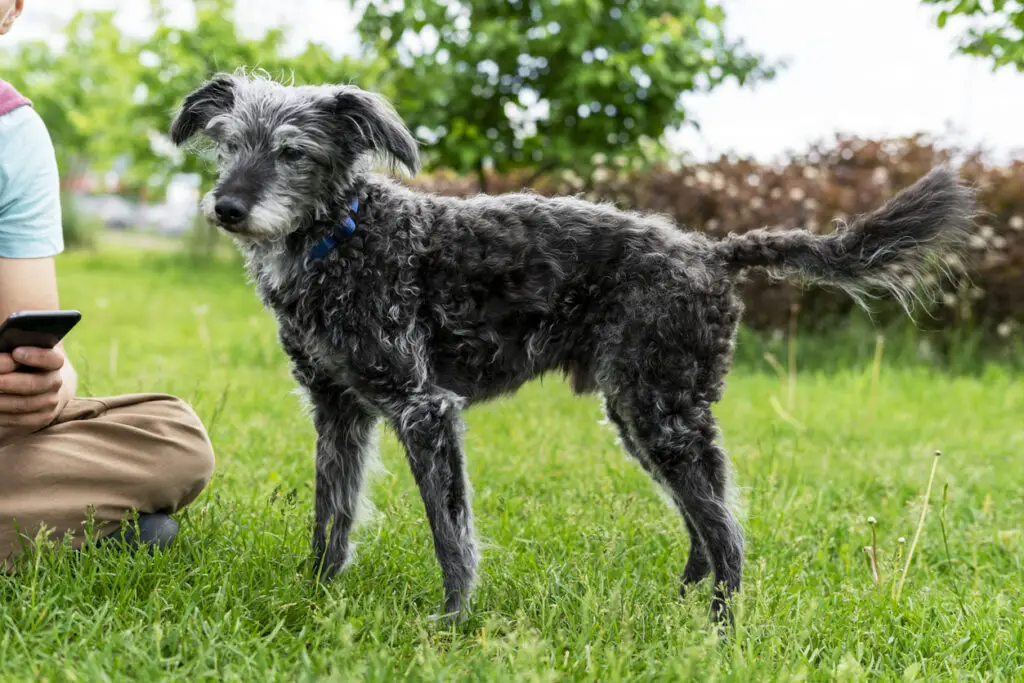
The Doodleman is a striking and intelligent hybrid that combines the sleek, protective nature of the Doberman Pinscher with the hypoallergenic, highly trainable qualities of the Poodle, according to Sidewalk Dog. This mix results in a dog that is both elegant and athletic, with a strong yet affectionate personality. Doodlemans tend to inherit the Doberman’s natural guarding instincts, making them excellent watchdogs while also benefiting from the Poodle’s playful and friendly demeanor. Their coat varies from wavy to curly, often making them a good choice for allergy sufferers. However, their fur requires consistent grooming to prevent matting, as well as regular brushing to keep it soft and tangle-free. They are medium- to large-sized dogs, often weighing between 50 and 90 pounds, depending on which parent’s genes are more dominant.
Highly intelligent and eager to please, the Doodleman is a quick learner and excels in obedience training. They require firm yet positive reinforcement training from an early age to ensure they grow into well-behaved adults. Without proper socialization and mental stimulation, they can develop undesirable behaviors such as excessive barking or destructive chewing. This breed mix thrives in an active household, as they need regular exercise, interactive play, and engaging tasks to keep their minds occupied. If left alone for long periods, they may become anxious or exhibit signs of separation distress. Ideal for experienced dog owners or families who have the time to invest in their training, the Doodleman is a devoted, loving, and protective companion.
2. Pomsky (Pomeranian + Siberian Husky)
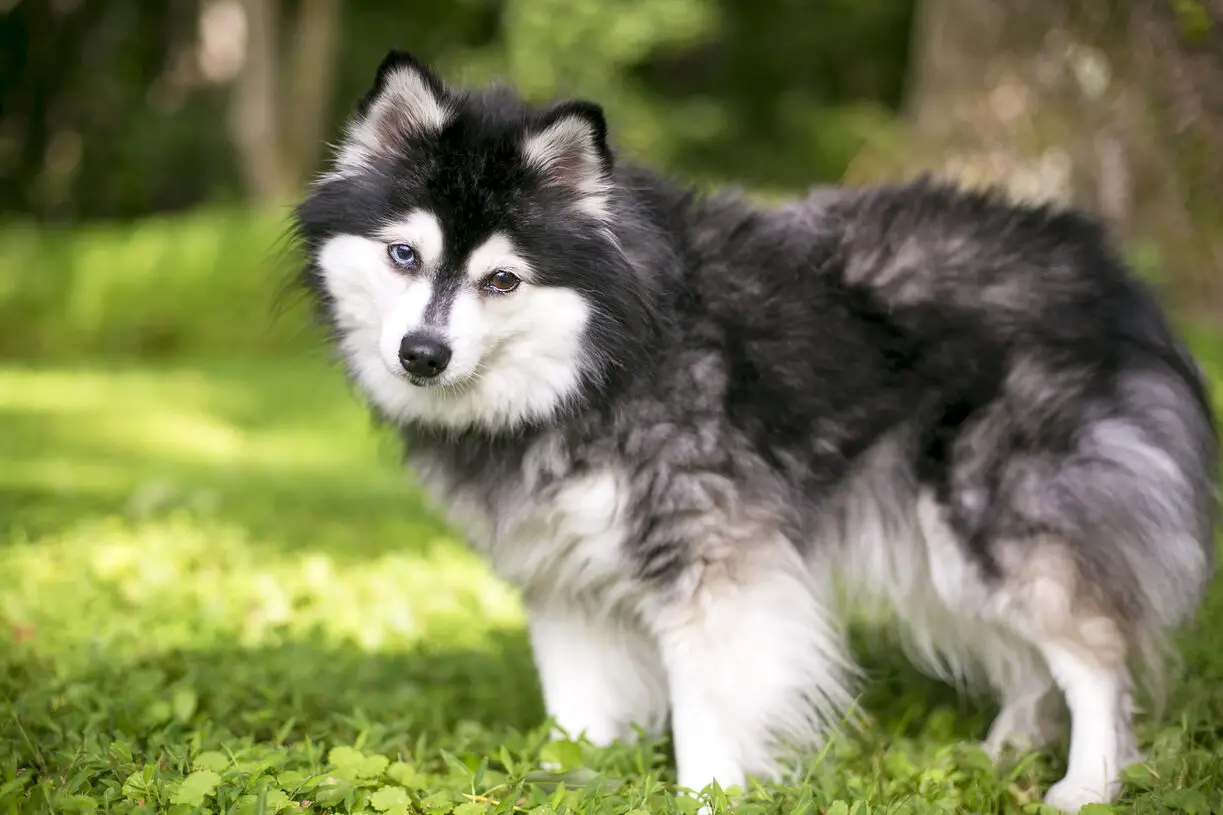
The Pomsky is a visually stunning and high-energy designer breed that blends the fluffy, compact charm of the Pomeranian with the majestic, wolf-like appearance of the Siberian husky, according to BeChewy. This mix results in an irresistibly cute dog with a fluffy coat, bright expressive eyes (sometimes even striking blue like a Husky), and a lively personality that keeps owners entertained. Because of the significant size difference between the two parent breeds, pomskies are typically bred through artificial insemination to ensure safe reproduction. They usually weigh between 15 and 30 pounds, making them a great choice for those who admire Huskies but want a smaller, more manageable version. Their double coat is thick and luxurious, which means they shed quite a bit, especially during seasonal changes. Regular brushing is essential to keep their fur in good condition and to reduce loose hair around the home.
While their small size might make them seem low-maintenance, Pomskies are packed with energy and require an active lifestyle. They inherit the Husky’s playful, mischievous nature and can be quite vocal, often howling or “talking” in a way that resembles their Siberian parent. Their intelligence makes them quick learners, but they can also be stubborn, which means consistent training and positive reinforcement are necessary. Without sufficient exercise and mental stimulation, they can become destructive, chewing furniture or digging around the house. Pomskies are affectionate and bond deeply with their owners, often displaying separation anxiety if left alone for too long. They do best in households where they receive plenty of attention and engagement, making them perfect for active individuals or families willing to keep up with their playful antics.
3. Chusky (Chow Chow + Siberian Husky)
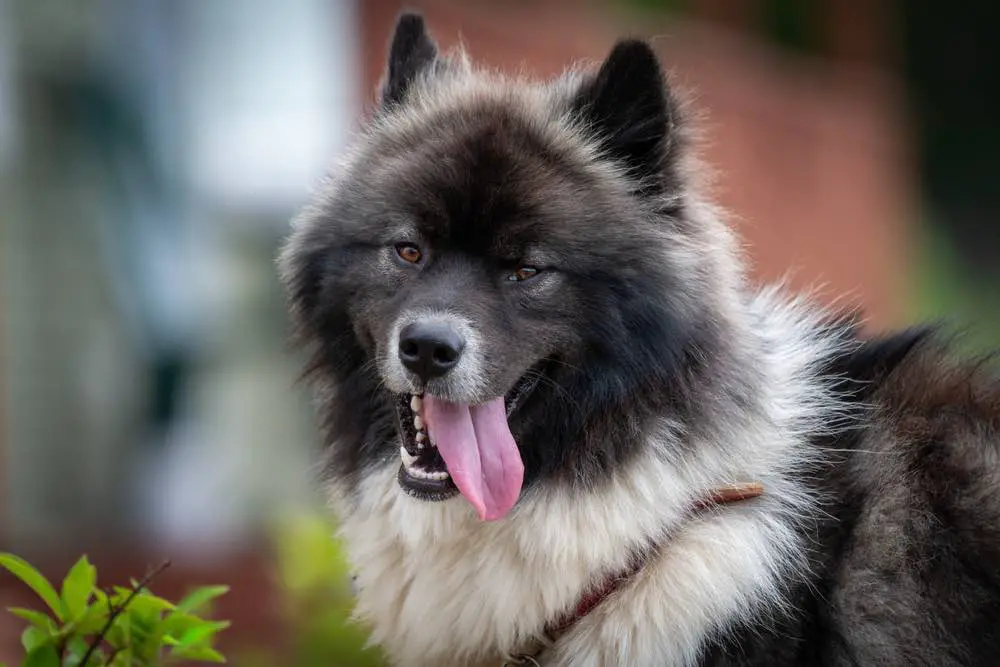
The Chusky is a majestic and fluffy hybrid that combines the independent, lion-like appearance of the Chow Chow with the athleticism and striking features of the Siberian Husky, according to All Paws. This mix creates a medium- to large-sized dog with a thick, plush coat, a strong build, and a confident, intelligent personality. Chuskies are known for their stunning good looks, often inheriting the Husky’s blue or heterochromatic (two different-colored) eyes and the Chow Chow’s characteristic fluffy mane. However, with that beautiful coat comes a lot of shedding—Chuskies are notorious for leaving fur everywhere, requiring diligent grooming. Brushing several times a week is essential to keep their coat free of tangles and minimize loose hair. Their thick fur also makes them more suited for cooler climates, as they can struggle in hot weather.
Temperament-wise, Chuskies are loyal, intelligent, and somewhat independent, which can make training both rewarding and challenging. They inherit a strong-willed nature from both parents, meaning they require firm, consistent training from an early age. While they can be affectionate with their family, they are not always eager to please and may develop a stubborn streak. Because of their protective instincts, they can be wary of strangers, making them excellent watchdogs when properly socialized. However, their Husky side brings in a playful and friendly nature, so they are usually good with children and other dogs when raised in a social environment. Due to their high energy levels, Chuskies need plenty of exercise and mental stimulation, making them best suited for experienced dog owners who can handle their independent spirit.
4. Pitsky (Pit Bull + Siberian Husky)
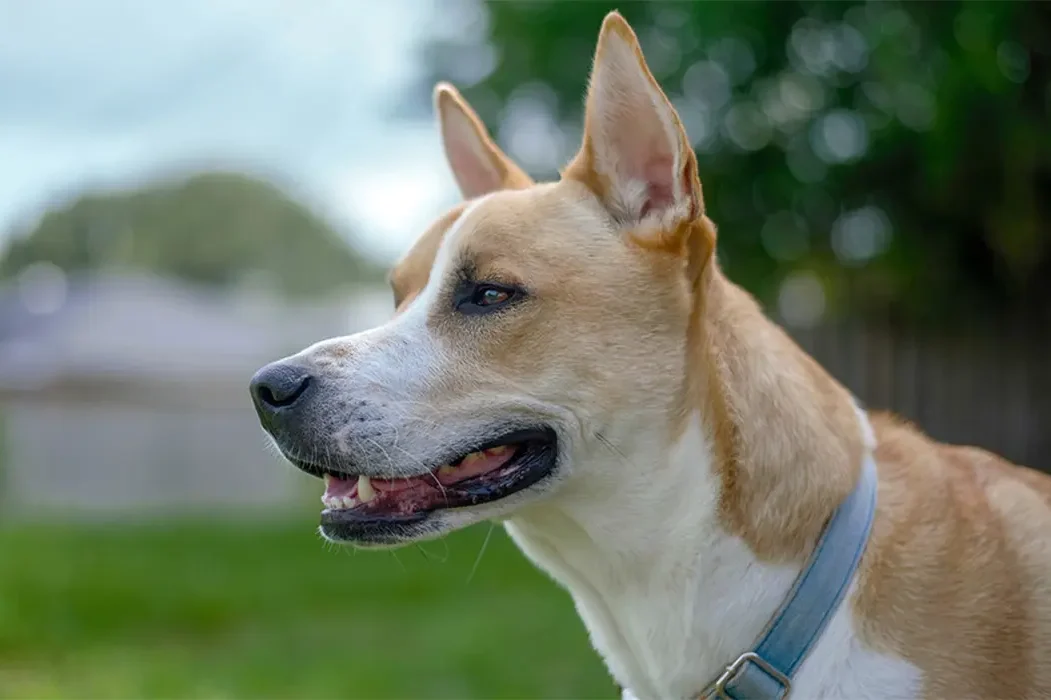
The Pitsky is a powerhouse of strength, energy, and loyalty, blending the muscular build and determination of the Pit Bull with the athletic endurance and playful nature of the Siberian Husky. This mix results in a medium- to large-sized dog that can range anywhere from 35 to 80 pounds, depending on which parent breed’s genes dominate. Their appearance varies widely—some have the short, sleek coat of a Pit Bull, while others inherit the Husky’s thick double coat, which requires more maintenance. According to Dogster, they can come in various colors, including black, brown, gray, and brindle. One of their most striking features is their eyes; many Pitskies inherit the Husky’s piercing blue eyes or even heterochromatic eyes, making them look mesmerizing. While they are stunning dogs, they are also heavy shedders and require frequent brushing to keep their coat in good condition.
Personality-wise, Pitskies are highly intelligent, affectionate, and extremely energetic, making them perfect for active families or individuals who love outdoor adventures. However, they require early socialization and consistent training due to their strong-willed and sometimes stubborn nature. They can inherit the Husky’s love for running and the Pit Bull’s strength, which means leash training is essential to prevent pulling. Without proper physical and mental stimulation, Pitskies can become destructive, chewing furniture, digging, or even attempting to escape, especially if they inherit the Husky’s notorious wanderlust. They thrive with experienced dog owners who understand their needs and can provide the structure, training, and exercise they crave. When raised in a loving and structured environment, the Pitsky is an incredibly loyal and affectionate companion that will never leave your side.
5. Corgidor (Corgi + Labrador Retriever)
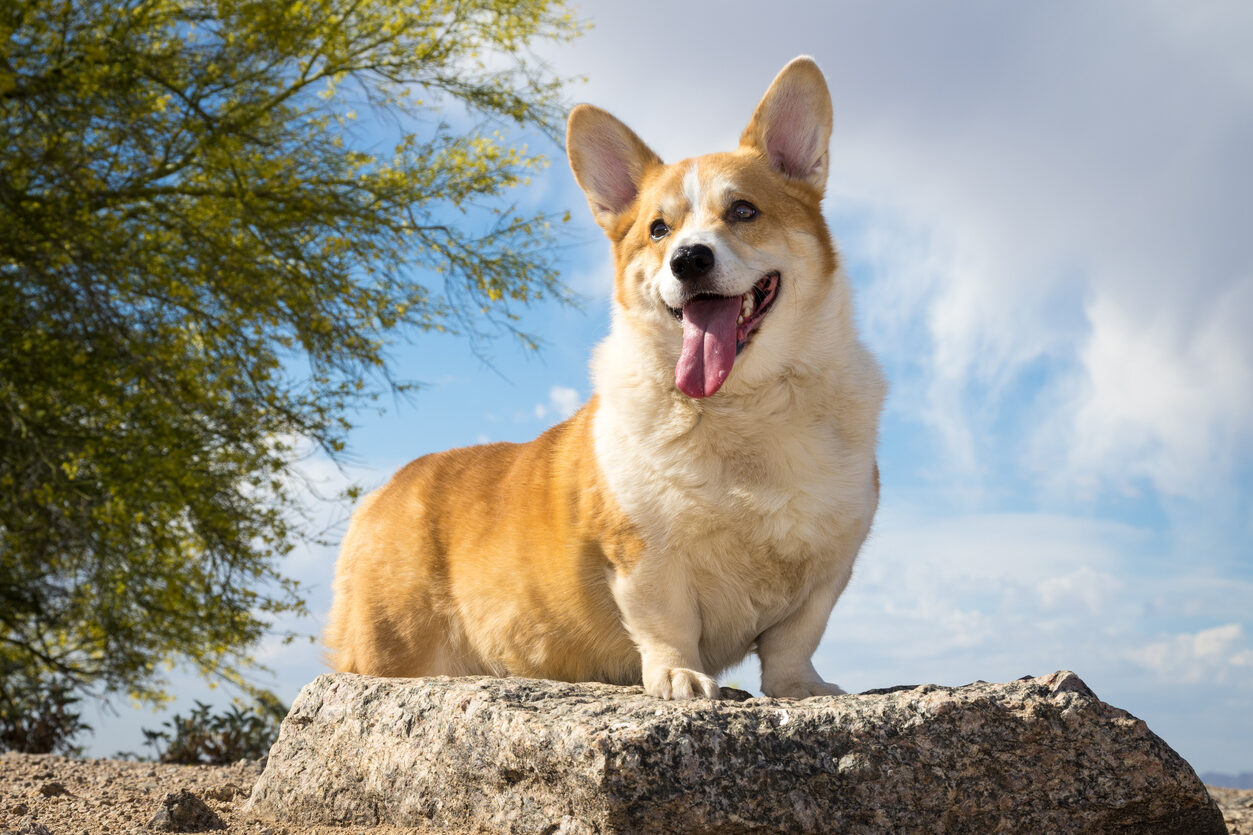
If you’ve ever wondered what a Labrador Retriever would look like with the short, stubby legs of a Corgi, the Corgidor is your answer! This unique hybrid combines the friendly and social nature of the Labrador with the quirky, spirited personality of the Corgi. The result is an adorable, medium-sized dog with the Lab’s playful demeanor and the Corgi’s signature short legs. While their body shape may be compact, their personality is anything but—they are lively, affectionate, and incredibly eager to please. Their coat is usually a blend of both parents, often short to medium-length, and they can come in a variety of colors, including yellow, black, chocolate, or merle. Grooming is relatively easy, though they do shed moderately, especially during seasonal changes. According to Dogster, their coat can be a blend of both parent breeds, adding to their adorable appeal.
Corgidors are incredibly intelligent and trainable, making them great family pets and excellent candidates for obedience training. However, they can inherit the Corgi’s herding instincts, which may lead them to try and “herd” small children or other pets by gently nipping at their heels. Proper training and redirection can help curb this behavior early on. They are highly food-motivated, which makes training easier, but it also means they can become overweight if their diet isn’t carefully managed. Despite their short stature, corgidors are energetic dogs that require daily walks, playtime, and mental stimulation to keep them happy. They thrive in a family setting where they receive plenty of love, attention, and structured activity. If you’re looking for a small but sturdy companion with the heart of a Labrador and the sass of a Corgi, the Corgidor is a fantastic choice.
6. Bullmatian (Bulldog+ Dalmatian)
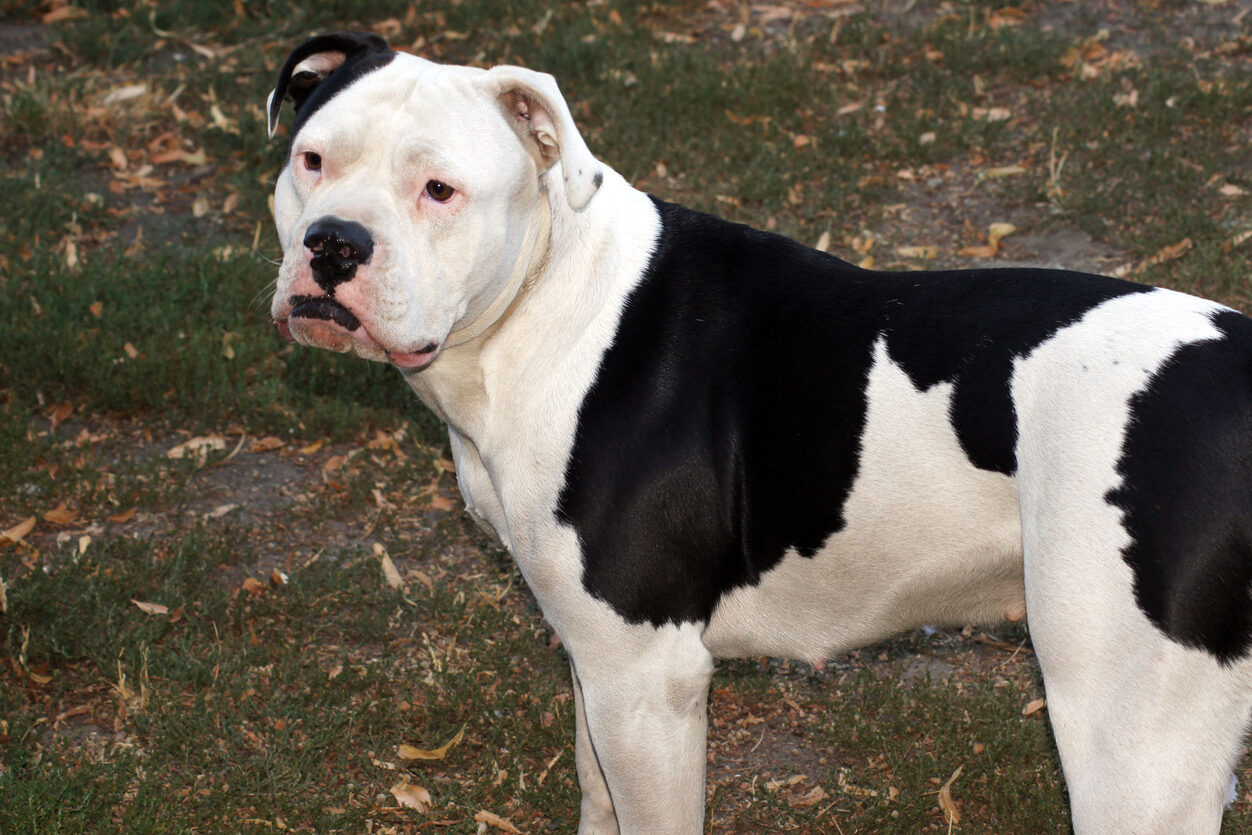
The Bullmatian is a rare and eye-catching breed mix that combines the distinctive spotted coat of the Dalmatian with the stocky, muscular build of the Bulldog. This hybrid results in a medium- to large-sized dog that usually inherits the Dalmatian’s elegant, athletic frame but with a more solid, muscular structure thanks to the Bulldog genes. Their coat is often short and sleek, with spots appearing in varying patterns, making each Bullmatian unique in appearance. While they are undeniably striking to look at, their coat is low-maintenance and only requires occasional brushing to keep shedding under control. However, since both parent breeds are prone to certain genetic health issues—like hip dysplasia and skin sensitivities—it’s important to choose a reputable breeder or ensure proper veterinary care if adopting one.
Temperament-wise, Bullmatians are friendly, affectionate, and playful, making them wonderful family pets. They inherit the Bulldog’s laid-back nature but also the Dalmatian’s high energy levels, so they need a balance of exercise and relaxation. If they take after the Dalmatian, they may have a strong guarding instinct and can be protective of their family. Early socialization is key to ensuring they are well-mannered and friendly around strangers and other pets. They can be a bit stubborn, but they are also highly intelligent and respond well to positive reinforcement training. While they love to be active, they are also content lounging around the house, making them a versatile breed mix that suits various lifestyles.
Click here for more stories like this
7. Shepadoodle (German Shepherd + Poodle)
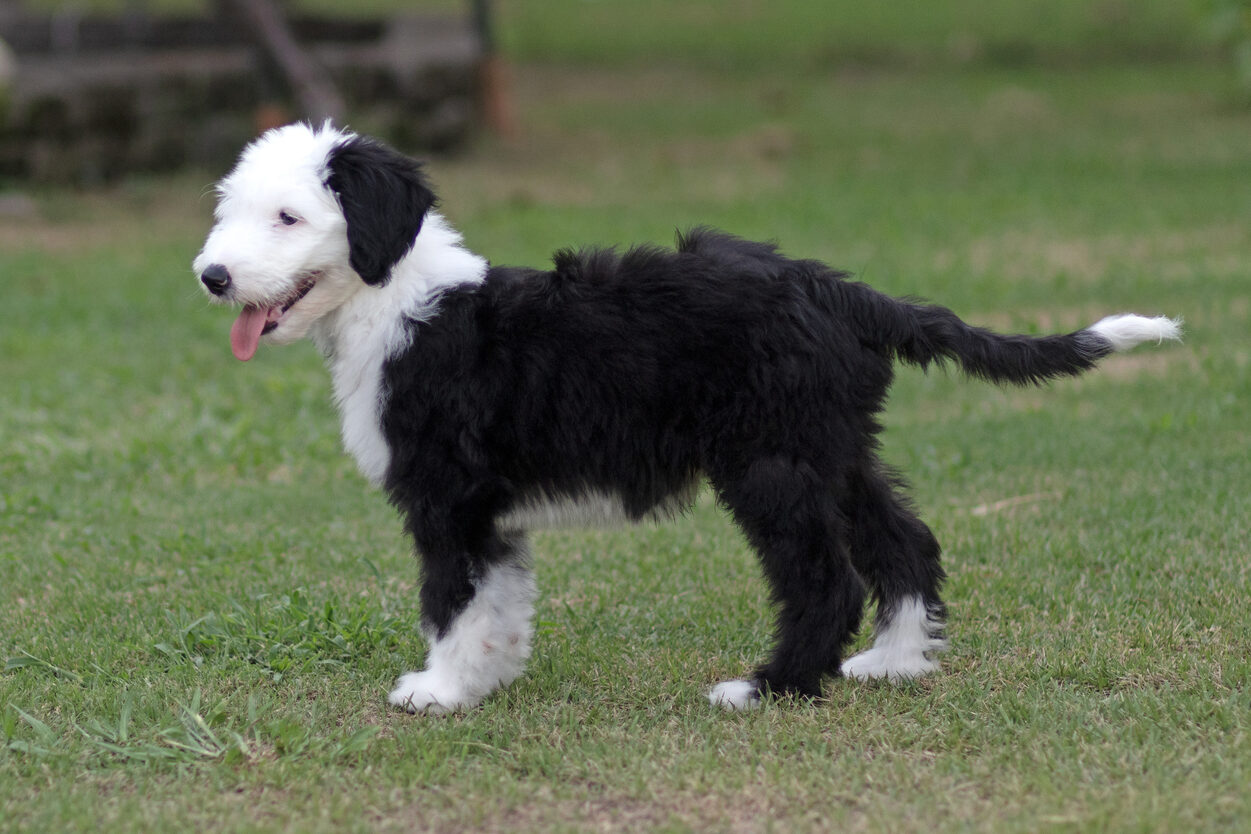
The Shepadoodle is a remarkable mix of the highly intelligent and protective German Shepherd with the obedient and hypoallergenic Poodle. This combination results in a dog that is not only highly trainable but also incredibly versatile. Shepadoodles are often used as service dogs, therapy dogs, and even search-and-rescue animals due to their intelligence and eagerness to work. Their coat can range from curly and hypoallergenic (if they take after the Poodle) to wavy and shedding (if they inherit more German Shepherd traits). Regardless of coat type, they require regular grooming to keep their fur from matting. They are typically medium- to large-sized dogs, weighing anywhere between 50 and 90 pounds, and have a sturdy, athletic build.
Beyond their striking looks, Shepadoodles are known for their deep loyalty and affectionate nature. They form incredibly strong bonds with their families and can be protective, making them excellent watchdogs. However, early socialization is crucial to ensure they don’t become overly wary of strangers. Their intelligence makes them easy to train, but they also require constant mental stimulation to prevent boredom. Without proper exercise, they can develop anxiety or destructive behaviors. They thrive in active households where they can engage in outdoor activities, obedience training, and problem-solving games. If you’re looking for a dog that is highly intelligent, devoted, and energetic, the Shepadoodle is a fantastic choice for experienced owners who can provide structured training and companionship.
8. Hug (Husky + Pug)
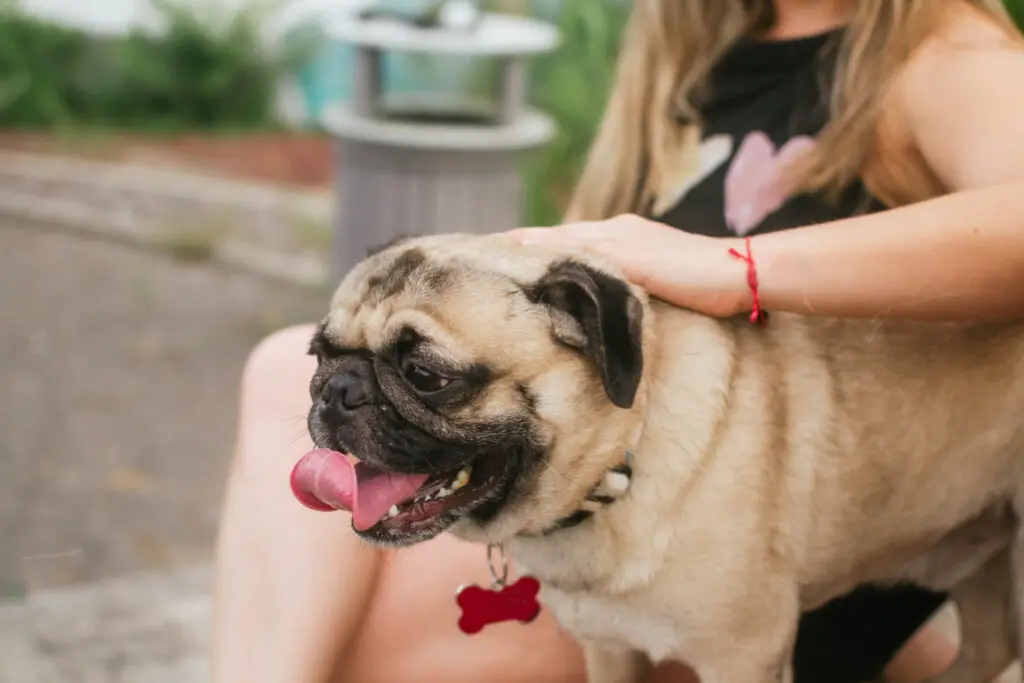
The Hug is an unusual and adorable cross between the sturdy, energetic Siberian Husky and the small, wrinkly-faced Pug. At first glance, this mix might seem like an odd pairing due to the significant size and personality differences between the parent breeds. However, when blended, they create a medium-sized dog with a charmingly unique appearance. Hugs often inherit the Husky’s thick, fluffy coat combined with the Pug’s characteristic round face, short snout, and expressive eyes. Some have the pug’s compact body with husky-like markings, while others might have longer legs and a curled tail. Their coats vary from short to medium in length and require regular grooming, especially if they lean more toward the Husky’s fur type, which sheds heavily.
In terms of personality, hugs can be quite a handful! They inherit the Husky’s high energy levels and talkative nature, meaning they love to “speak” to their owners in howls, whines, and barks. At the same time, the pug’s affectionate and comedic nature makes them incredibly endearing companions. While they are friendly and social, they can also be stubborn, making training a challenge for first-time dog owners. They need patience, consistency, and positive reinforcement to thrive. Since huskies are known for their escape artist tendencies and pugs can be prone to breathing issues due to their flat faces, owners must carefully monitor their huskie’s activity level and health needs. With the right training, exercise, and attention, the Hug is a playful, loving dog that brings endless joy and laughter to any household.
9. Mastador (Mastiff + Labrador Retriever)
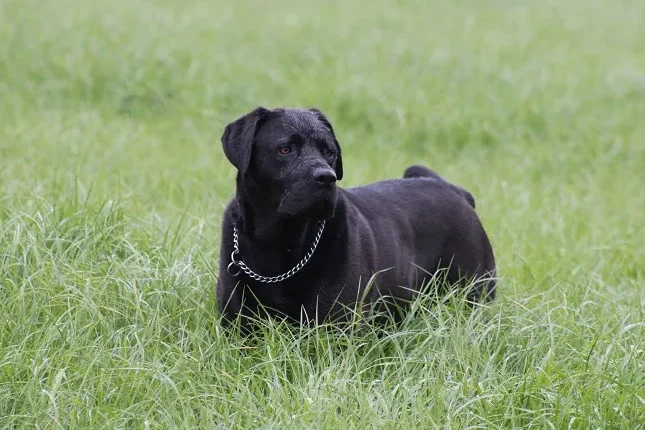
The Mastador is a gentle giant that combines the massive strength of the Mastiff with the friendly and outgoing nature of the Labrador Retriever. This mix creates a large, muscular dog that can weigh anywhere from 80 to 160 pounds, making them best suited for owners with plenty of space. Their coat is typically short and dense, requiring minimal grooming, but they are moderate shedders. Mastadors often inherit the Mastiff’s signature droopy face and deep, soulful eyes, giving them an expressive and wise look. Despite their size, they have a surprisingly sweet and affectionate nature, often believing they are lap dogs and trying to cuddle with their owners.
Loyalty is one of the Mastador’s strongest traits. They form deep bonds with their families and are highly protective, making them excellent watchdogs. However, unlike purebred mastiffs, they are more social and welcoming to strangers, thanks to the Labrador’s influence. While they are generally gentle and patient, early socialization is crucial to ensure they don’t become overly protective or territorial. Due to their large size, they require firm, consistent training from an early age to prevent them from developing bad habits like jumping or pulling on the leash. Despite their strength, they have a soft heart and respond best to positive reinforcement. Mastadors thrive in homes with large yards or active owners who can provide them with plenty of exercise, making them an excellent choice for families looking for a loyal, loving, and protective companion.
10. Chorkie (Chihuahua + Yorkshire Terrier)
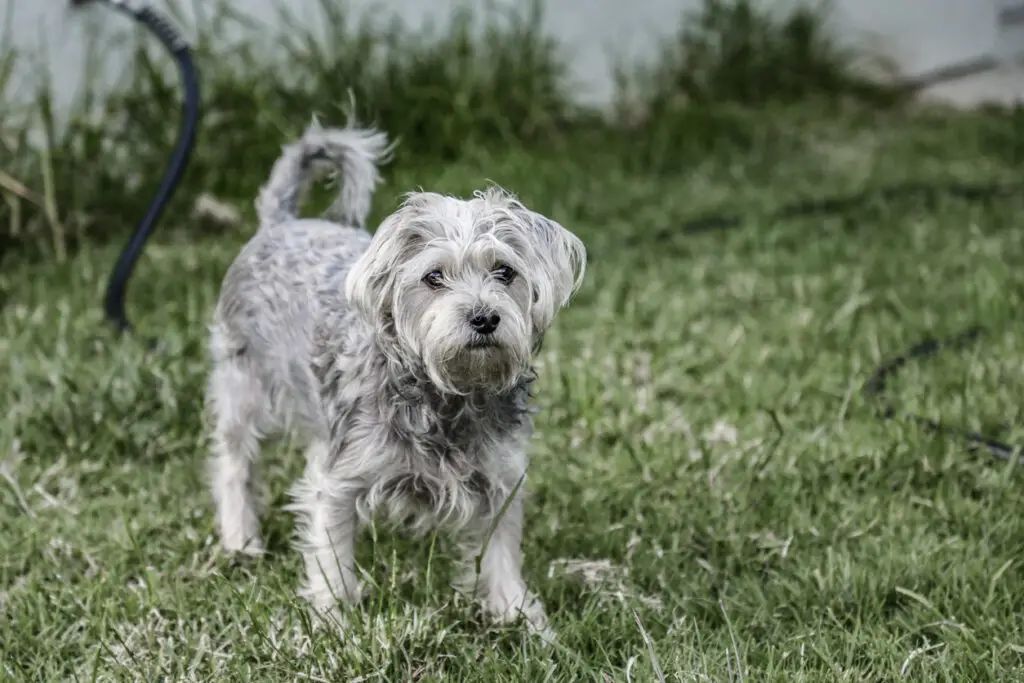
The Chorkie is a tiny but feisty mix that brings together the sass of the Chihuahua with the spunky attitude of the Yorkshire Terrier. This designer breed typically weighs between 5 and 12 pounds, making them a great option for those looking for a small yet lively companion. Their coat can vary widely—some Chorkies inherit the Yorkshire Terrier’s silky, fine fur, while others have a shorter, smoother coat like a Chihuahua. Grooming needs depend on which coat type they inherit, but either way, they shed minimally compared to many other breeds. Their small size makes them ideal for apartment living, but don’t be fooled—they have huge personalities packed into their tiny bodies!
Chorkies are incredibly bold, confident, and full of energy. They love being the center of attention and can be quite vocal, often barking at the slightest noise or unfamiliar person. While they are affectionate with their owners, they can sometimes be wary of strangers and need early socialization to ensure they grow into well-rounded dogs. Due to their small stature, they are best suited for families without very young children, as rough play can easily injure them. Despite their tiny size, chorkies have an adventurous spirit and love exploring their surroundings. They require regular playtime and mental stimulation to prevent boredom, as they can become stubborn or even destructive if left unattended for long periods. If you’re looking for a pocket-sized companion with an oversized personality, the Chorkie is an excellent choice.


